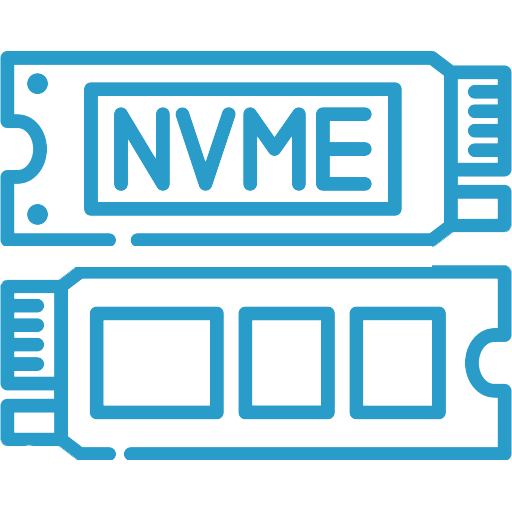in today's data-driven world, protecting critical business information is paramount for organizational success.
Snapshot Replication represents a revolutionary approach to data backup and protection, combining speed,
efficiency, and reliability to deliver comprehensive protection for mission-critical data assets
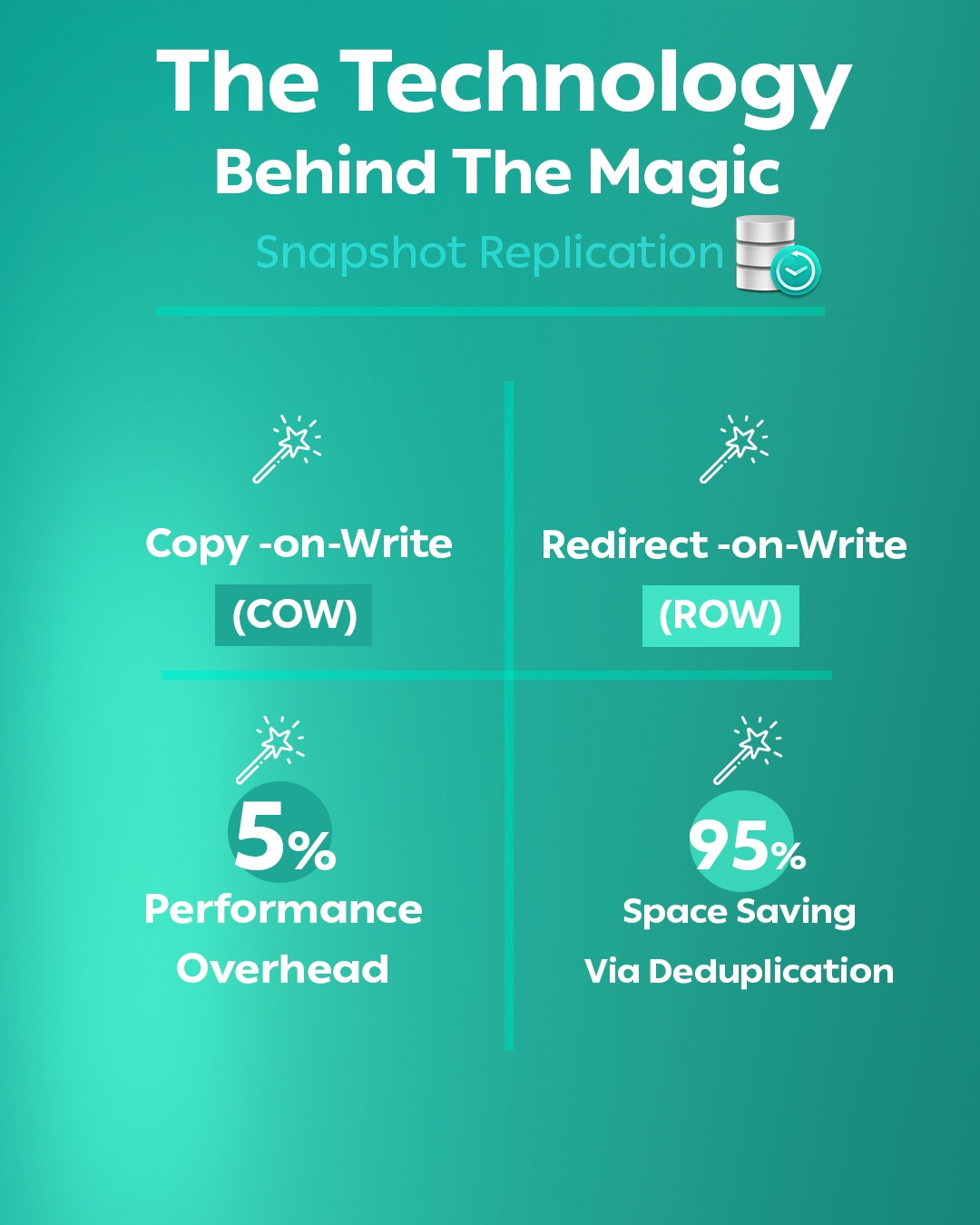 Understanding Snapshot Replication
Understanding Snapshot Replication
Snapshot replication represents a paradigm shift from traditional backup methodologies. Unlike conventional approaches that create full copies of data at scheduled intervals, snapshot replication creates
replicates only the changes between snapshots.
The Technology Behind the Magic
At its core, snapshot replication leverages advanced storage technologies to capture the exact state of your data at specific moments. These snapshots serve as recovery points that can be instantly accessed, providing unprecedented flexibility in data restoration scenarios.
Core Components and Architecture
Snapshot Creation Engine
The foundation of any snapshot replication system lies in its ability to create
and Redirect-on-Write (RoW) technologies to ensure minimal performance impact during snapshot creation.
snapshot creation.
Configurable from minutes to hours
Storage Efficiency
Up to 95% space savings through deduplication
Replication Engine
The replication component handles the intelligent transfer of snapshot data between source and target locations. Advanced algorithms identify changes at the block level, ensuring that only modified data traverses the network.
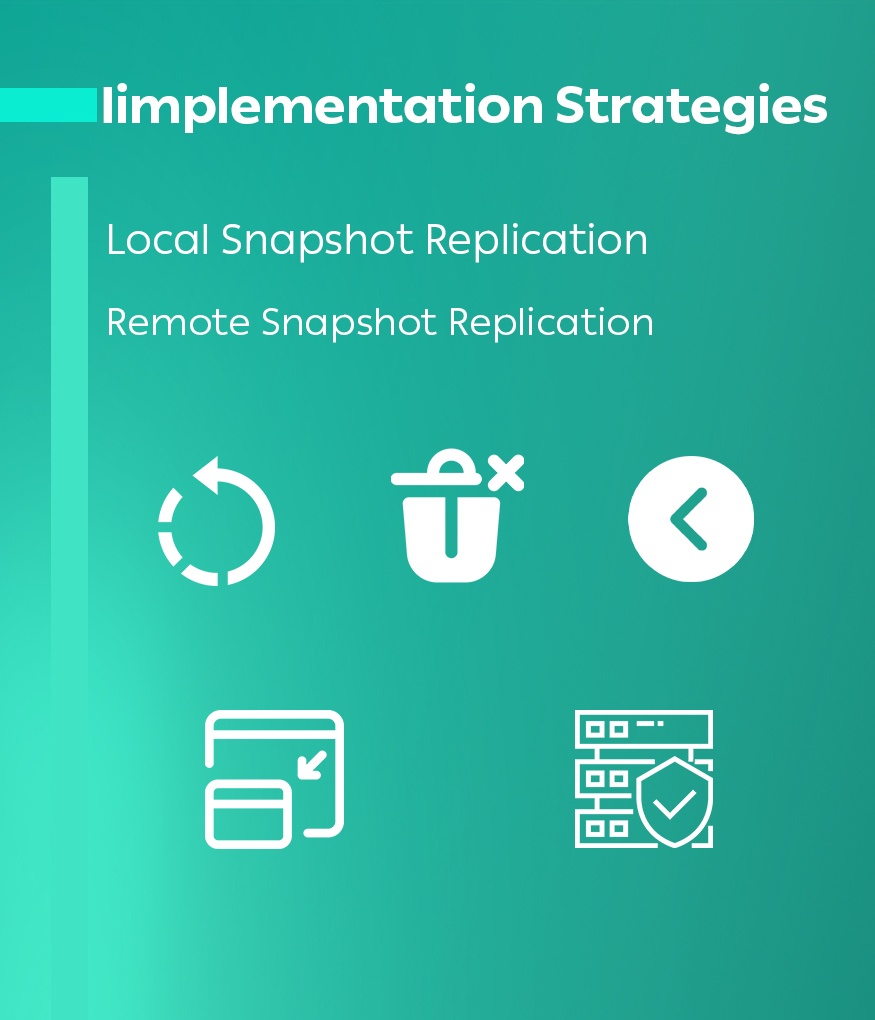 Iimplementation Strategies
Iimplementation Strategies
Local Snapshot Replication
Local replication involves creating snapshots within the same storage infrastructure,
providing rapid recovery capabilities for common scenarios such as:
accidental file deletion or corruption
application level-data inconsistencies
Rolling back problematic software updates
Creating test and development environments
Remote Snapshot Replication
Remote replication extends protection beyond the primary data center, creating
geographically distributed copies of critical snapshots. This approach addresses more severe disaster scenarios including natural disasters, facility failures, and regional outages
# Example configuration for automated snapshot replication
Business Impact and ROI
99.9%
RECOVERY SUCCESS RATE
15min
AVERAGE RTO
60%
COST REDUCTION
24/7
CONTINUOUS PROTECTION
Operational Excellence
Organizations implementing snapshot replication typically experience dramatic improvements in their disaster recovery capabilities. The ability to restore entire systems or individual files from specific points in time eliminates the guesswork traditionally associated with data recovery operations.
Cost Optimization
by reducing storage requirements through intelligent deduplication and compression, snapshot replication delivers significant cost advantages over traditional backup methods. Organizations report storage savings of 70-90% while maintaining superior recovery capabilities.
Advanced Features and Capabilities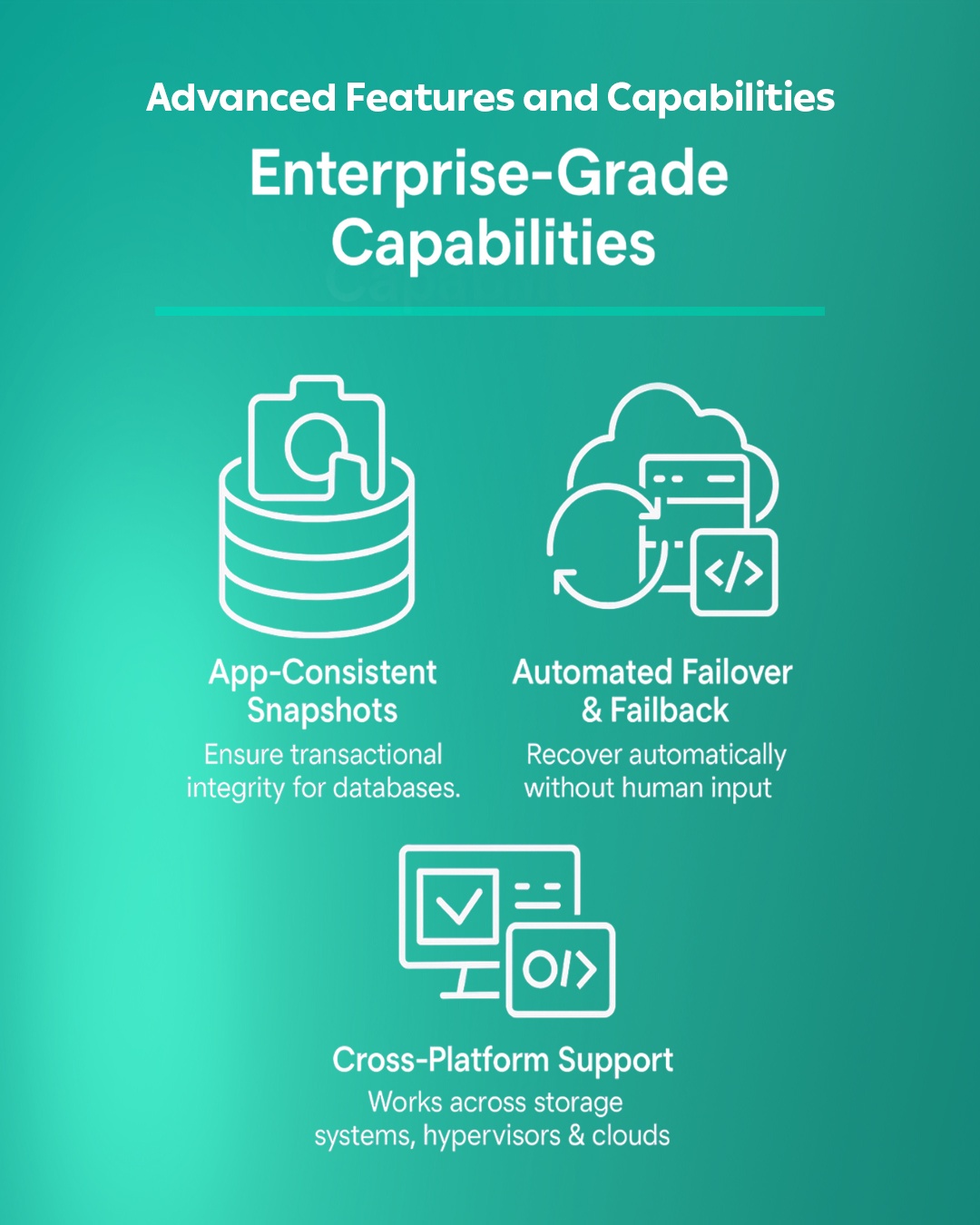
Application-Consistent Snapshots
Modern snapshot replication systems integrate with applications and databases to ensure transactional consistency. This capability is crucial for enterprise applications where data integrity is paramount.
Application-consistent snapshots guarantee that recovered data maintains referential integrity, eliminating the risk of corruption that can occur with crash-consistent recovery points.
Automated Failover and Failback
Advanced implementations provide automated failover capabilities that can detect primary system failures and initiate recovery procedures without human intervention. This automation reduces recovery time objectives (RTO) from hours to minutes
Cross-Platform Compatibility
Enterprise-grade snapshot replication solutions support heterogeneous environments, enabling protection across different storage platforms, hypervisors, and cloud providers. This flexibility ensures comprehensive protection for complex IT infrastructures.
Best Practices for Implementation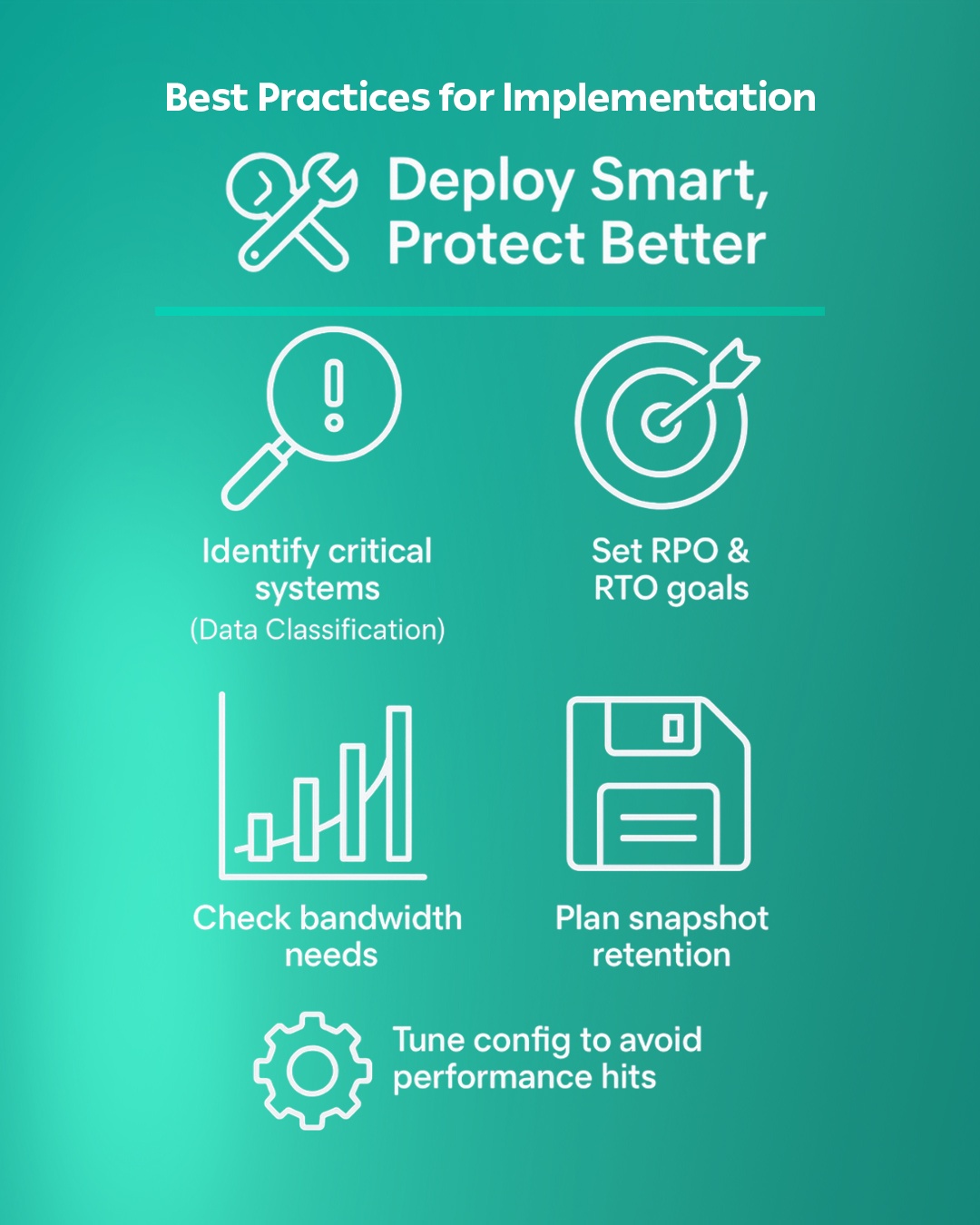
Planning and Assessment
Conduct comprehensive data classification to identify critical systems
Define Recovery Point Objectives (RPO) and Recovery Time Objectives (RTO)
Assess network bandwidth requirements for replication traffic
Evaluate storage capacity needs for snapshot retention
Configuration Optimization
Critical Consideration: Improperly configured snapshot schedules can impact system performance and storage utilization. Organizations should carefully balance protection requirements with operational efficiency
Testing and Validation
Regular testing of snapshot replication and recovery procedures is essential for maintaining confidence in the disaster recovery strategy. Organizations should implement automated testing frameworks that validate recovery capabilities without impacting production systems
Challenges and Considerations
Network Bandwidth Management
While snapshot replication is more efficient than traditional backup methods, initial replication and large change volumes can still consume significant network bandwidth. Implementing Quality of Service (QoS) policies and bandwidth throttling helps manage network impact.
Storage Growth Planning
Although snapshot replication is storage-efficient, organizations must plan for growth in snapshot storage requirements. Implementing automated cleanup policies and tiering strategies helps manage long-term storage costs.
Future Trends and Innovations
Cloud Integration
The integration of snapshot replication with cloud services is creating new possibilities for hybrid disaster recovery strategies. Organizations can leverage cloud infrastructure for cost-effective long-term retention while maintaining on-premises systems for rapid recovery
Artificial Intelligence and Machine Learning
Emerging solutions incorporate Al and ML technologies to optimize snapshot schedules, predict failure scenarios, and automatically adjust replication policies based on changing business requirements
Conclusion
Snapshot replication represents a fundamental advancement in data protection technology, offering organizations unprecedented capabilities for maintaining business continuity in an increasingly complex digital landscape. By providing Rapid Recovery
, and Storage Efficiency and operation flexibility , this technology enables organizations to meet modern data protection requirements while optimizing costs and resources.
As businesses continue to generate and rely upon ever-increasing volumes of critical data, the adoption of advanced snapshot replication strategies will become not just advantageous, but essential for competitive survival and regulatory compliance.
"The question is no longer whether organizations need advanced data protection, but rather how quickly they can implement snapshot replication to safeguard their digital future



















